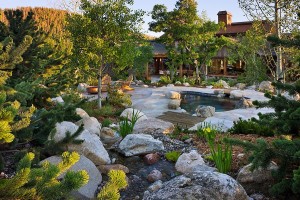These 10 elements are key essentials for sustainable homebuilding.
- A Leadership Attitude – The owners of the home are the leaders of the effort toward sustainability and must be willing to enforce sustainable standards and practices during design and construction.
- A Commitment to Preserving Environment and Resources – A willingness to confront the environmental and resource issues created by putting a structure where there was none before.
- A Sustainable Lot – Choose a lot which makes sense. Some building sites are inherently better for building sustainably. Consider orientation, exposure, topography and accessibility. For example: choose a southern exposure in a cooler environment. Choose an accessible lot to minimize resources expended on infrastructure. Don’t fight the topography. Embrace it.
- A Supportive Community -Does your community or owner’s association support sustainable standards and practices. Some towns and subdivisions restrict the use of solar panels or wind turbines.
- An Interest in Research – Sustainable Practices and Principles require study. Technologies change quickly so it’s important to stay current.
- A Sustainable Design Team – Do available Architects, Designers, and Engineers have the knowledge and commitment to support a sustainable project?
- A Sustainable Build Team – Do available Builders have the knowledge and commitment to support a sustainable project?
- A Reasonable Concept – Is your concept compatible with sustainablility. Are you willing to compromise to achieve sustainable objectives?
- A Reasonable Budget – Is your budget adequate to fund a sustainable project. Sustainability is seldom less expensive than standard construction standards.
- A Reasonable Timeframe – Designing and Building the sustainable home takes time. Inflexible deadlines don’t allow for design optimization or project planning.













